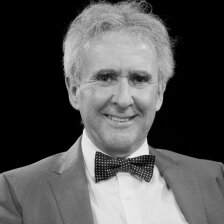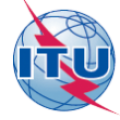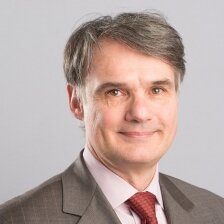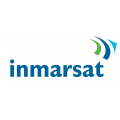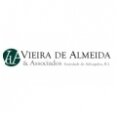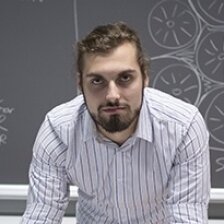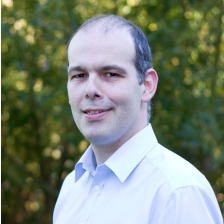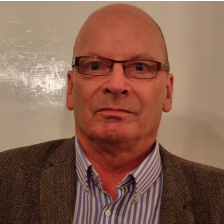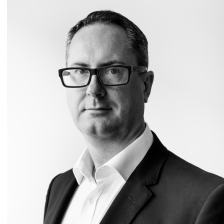Day 1
7 April 2016
Satellites – Day 1


09:45AM
Satellite orbit and spectrum resources for future innovation, WRC-15 outcomes
Yvon Henri
Chief of the Space Services Department
Radiocommunication Bureau of the International Telecommunication Union (ITU)
The ITU World Radiocommunication Conference 2015 (WRC-15) concluded its deliberations on 27 November 2015 with the signature of the Final Acts that revise the Radio Regulations, the international treaty governing the use of the radio-frequency spectrum and the geostationary-satellite and non-geostationary-satellite orbits.
In this session we will share the outcomes of WRC-15 and its impact on frequency allocation and frequency sharing for the efficient use of spectrum and orbital resources.
The outcomes will ensure high quality radiocommunication services for mobile and satellite communications, maritime and aeronautical transport, air and road safety as well as for scientific purposes related to the environment, meteorology and climatology, disaster prediction, mitigation and relief.
The presentation will focus on space issues, telecommunication and scientific applications from the earth’s atmosphere end to deep space, new challenges and opportunities.
10:15AM
Satellite capacity in orbit
Michele Franci
Chief Technology Officer
Inmarsat
The development of satellite communication has highlighted the need for managing a new, previously unused, international resource – the satellite spectrum/orbit resource. Due to the growing demand for satellite capacity, this resource – particularly the geostationary-satellite orbit (GSO), which supports a large part of the world’s TV, live global broadcast and data services (VSAT and mobile networks backhaul) – is becoming increasingly crowded. At the same time, the increasing use of lower Earth orbits is further increasing the need for international coordination.
In this session we will focus on the satellite capacity in orbit, its challenges and solutions
10:45AM
networking break
11:15AM
Panel – Data from satellite constellations
Helena Correia Mendonça
Managing Associate
Vieira de Almeida
Giovanni Pandolfi
CTO
Leaf Space
Read more about it here: https://bit.ly/1FLnQFS
12:00PM
Lunch
Earth observation and navigation from space – Day 1
01:30PM
Shared satellites and international partnerships
Luis Gomes
Director Earth Observation and Science
Surrey Satellite Technology Ltd (SSTL)
In the UK we take for granted the services we receive as a result of space infrastructure such as seeking a weather forecast, planning our journey into work, managing our businesses online or accessing data at the touch of a button. However, for many, basic services such as communication infrastructure or local mapping are simply not available to them. Satellites in space often provide the only communication options in many countries in the world, particularly in places like sub-Saharan Africa.
In addition, environmental monitoring from space can make a valuable contribution to resource management and response to environmental crises which can be particularly challenging owing to extreme environments and harsh conditions for agriculture and water management.
Monitoring from space satellites can also support longer term climate mitigation and adaptation programmes.
02:00PM
Space Weather and its effects on Earth
Neil Mitchison
former Head of Unit
Institute for the Protection and Security of the Citizen, Joint Research Centre, European Commission
While the immense thermo-nuclear reactor which is the Sun is essential for life on Earth, it occasionally throws out violent electromagnetic storms of various sorts, including proton storms, solar flares, and coronal mass ejections. If these hit the Earth, their effects on terrestrial infrastucture can be severe. These effects include disruption of transport links, distortion of GNSS signals which can perturb financial systems, and damage to electrical power grids.
Although we do not yet have accurate figures on the frequency of theser severe “space weather” events, experience shows that they are rare enough that they are often not taken into account in infrastructure design and maintenance: the potential for major disruption is very real.
This talk will present what is known about these risks, what the outstanding scientific and technical challenges are, and what measures are already available to mitigate them.
Neil Mitchison, former Head of Unit, Institute for the Protection and Security of the Citizen, Joint Research Centre, European Commission
Read more about it:
https://publications.jrc.ec.europa.eu/repository/bitstream/JRC86658/lbna26370enn.pdf
https://publications.jrc.ec.europa.eu/repository/bitstream/JRC92297/lbna26882enn.pdf
https://publications.jrc.ec.europa.eu/repository/bitstream/JRC98155/sw&rail_eur27523en.pdf
02:30PM
Networking break
03:00PM
Vulnerability of GNSS systems
Andy Proctor
Lead Technologist
Innovate UK
GPS provides free of charge precise time and position information worldwide. In a world of instant communications, much of our global telecom infrastructure relies on GPS to provide precise time and frequency information. For instance, telephone companies take advantage of GPS to synchronize their global telecom networks with inexpensive timing receivers.
But despite how much we rely on the Global Positioning System (GPS) for position information and as a time (and hence frequency) base, GPS remains vulnerable to natural and man-made obstacles. From receivers in poor geographic locations, to lost satellite signals, to jammed reception, GPS has at times been sensitive to interruptions.
In this session we will focus on the vulnerabilities of GNSS systems and the Galileo programme.
Galileo is to provide an indigenous alternative high-precision positioning system upon which European nations can rely, independently from the Russian GLONASS and US GPS systems, in case they were disabled by their operators. The use of basic (low-precision) Galileo services will be free and open to everyone. The high-precision capabilities will be available for paying commercial users. Galileo is intended to provide horizontal and vertical position measurements within 1-metre precision, and better positioning services at high latitudes than other positioning systems.
03:30PM
Risk assessment and mitigation of GNSS threats
Guy Buesnel
Market Segment Manager – Robust Positioning, Navigation and Timing
Spirent Communications
This presentation will provide insights into real-world threats to GNSS, the way in which they are developing and the kinds of techniques that could be used to mitigate against these threats.
We will present a framework for assessing system risk to emerging threats and will show that knowledge of system behaviour when exposed to real-world threats is an important part of a risk-assessment process.
This presentation also discusses how likely it is that systems will encounter threats such as GNSS interference and spoofing in the real world and how these threats are likely to evolve in the future.
Real examples of GNSS threats and their effects on positioning navigation and timing systems. Real world disruptions are shown to have occurred from solar weather effects, RF Interference, Spoofing and user segment errors. It is shown that the impact of these threats can be unexpected and severe in the most extreme cases.
The presentation also shows that gaining an understanding of PNT system behavior when exposed to threats, along with the potential impact can lead to the implemention of effective mitigation strategies that will reduce business risks.
04:00PM
Panel – Funding and supporting new technology
Mark Boggett
Managing Director
Seraphim Capital
Kathrin Sturm
Project Manager ESNC
Anwendungszentrum GmbH Oberpfaffenhofen (AZO)
Simon Bond
Innovation Director
Set Squared
In this panel session we will join together some of the larger investors in space technology in Europe.
The organisations represented on the panel have at their core funding and supporting new technology in the Space ecosystem. It will be discussed the different ways open to innovative uses of technology, data and space downstream applications.

